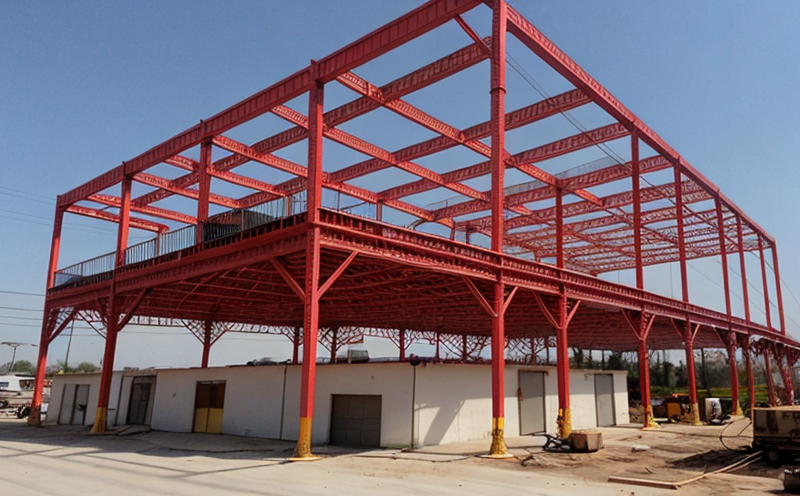Truss structure inspection
The inspection of truss structures is a critical process in ensuring the safety and integrity of buildings. Trusses are essential structural components that provide support to roofs, floors, and bridges. They consist of multiple members arranged in a triangular pattern, which distributes loads efficiently across the entire span. In construction projects, it's crucial to ensure that these elements meet design specifications and can withstand expected stresses without compromising safety.
The inspection process involves several key steps aimed at evaluating different aspects of trusses. These include visual inspections, structural integrity checks, load capacity verification, and compliance with relevant standards such as ASTM D5349 and ISO 17802. During the initial assessment, inspectors look for signs of deterioration or damage that could affect performance over time. This might involve examining paint coatings, checking for corrosion, inspecting welds, and verifying connections between members.
Load testing is another important aspect of truss structure inspection. By subjecting samples to controlled loads similar to those they will encounter in real-world conditions, engineers can assess whether the trusses meet specified strength requirements. Proper specimen preparation ensures accurate results, while advanced instrumentation helps gather precise data throughout the testing process.
Once inspections are completed, detailed reports are generated that outline findings and recommendations for any necessary repairs or improvements. Compliance with local building codes is also verified during this stage of the project. For instance, certain regions may require specific types of fasteners or materials when constructing trusses to ensure longevity under various environmental factors.
The importance of accurate and thorough inspections cannot be overstated given the potential consequences if defects go unnoticed. Regular maintenance schedules can help identify issues early enough so corrective actions can be taken before they become problematic. Additionally, incorporating non-destructive testing methods into routine checks allows for continuous monitoring without compromising structural integrity.
Industry Applications
Truss structure inspections play a vital role across various industries where safety and reliability are paramount considerations. In commercial construction projects, ensuring that trusses meet necessary standards helps guarantee the stability of large structures like office buildings or shopping centers. Residential developers also benefit from these services as they help maintain property values by preventing costly repairs later on due to structural failures.
In bridge construction, truss inspections ensure public safety by verifying that bridges can safely carry vehicular traffic and pedestrians. The transportation sector relies heavily on robust infrastructure components like these because any compromise could lead to accidents or even collapse events if not addressed promptly. Furthermore, power plant operators depend on reliable support structures for their facilities' integrity so that electricity generation continues uninterrupted.
For agricultural installations such as grain silos or dairy barns, proper truss design and inspection are crucial elements in maintaining operational efficiency while safeguarding against potential hazards associated with heavy equipment use or harsh weather conditions. By adhering to best practices throughout the lifecycle of these assets, organizations can extend their useful lives significantly.
Environmental and Sustainability Contributions
- Eco-friendly materials: Modern truss construction often incorporates sustainable building products made from recycled content or renewable resources. This reduces environmental impact by minimizing waste generation during production processes.
- Energy efficiency: Properly designed trusses contribute to energy conservation efforts by enhancing insulation properties and reducing heat transfer through walls and roofs, leading to lower heating and cooling costs for occupants.
- Reduced carbon footprint: Utilizing prefabricated sections reduces site waste associated with traditional on-site construction methods. Additionally, optimized designs minimize material usage without sacrificing structural performance.
By prioritizing sustainability in truss design and inspection practices, stakeholders contribute positively towards reducing overall building industry emissions while promoting resource conservation initiatives aligned with global environmental goals.
Use Cases and Application Examples
In commercial real estate developments, regular inspections of trusses ensure longevity and reduce maintenance costs. For instance, a 50-story office building might have thousands of individual truss members that must be checked periodically to maintain peak operational efficiency.
A bridge project may require extensive testing during its initial stages to confirm compliance with highway safety regulations before opening traffic lanes. Here, advanced instrumentation plays a key role in capturing detailed information about the structural behavior under dynamic loading conditions.
Residential housing projects also see benefit from rigorous truss inspections post-construction. A large-scale renovation initiative could involve replacing old, deteriorated trusses with new ones designed to better withstand expected wind and seismic forces.





